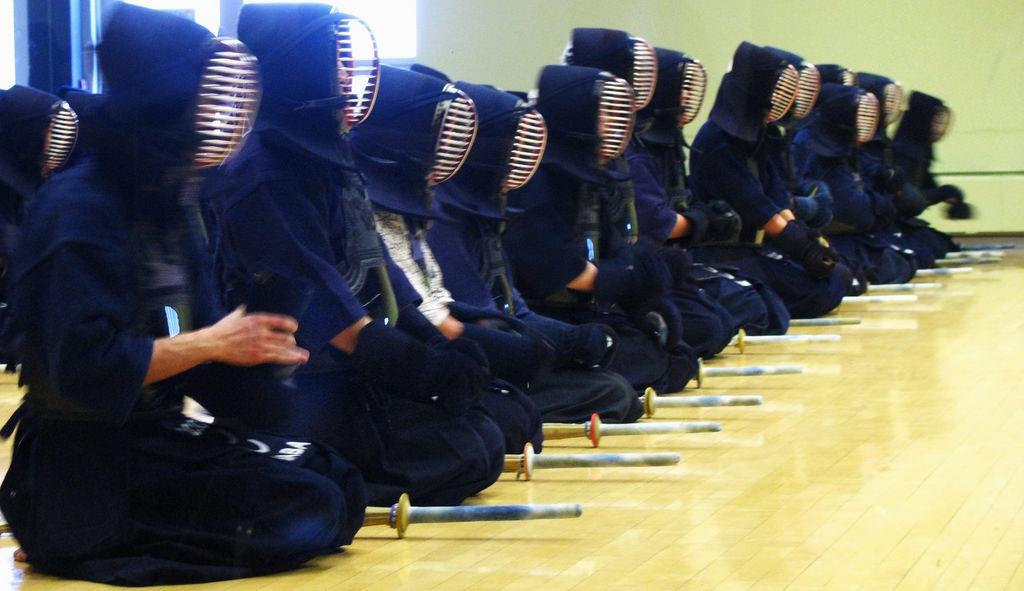Kendo takes off in Namibia
Kendo is a traditional Japanese martial art that descended from ancient swordsmanship, and uses bamboo swords and protective armour.
The sport of kendo in Namibia received a massive boost, with a visit by Sensei Warren Ho, who is the president of the South African Kendo Federation (SAKF).
Ho is supportive of nurturing kendo in the Land of the Brave, which is still a fledging sport being run by the Namibia Kendo Federation (NKF).
Kendo took off in Namibia after the current NKF president, André Pienaar, was trained by then fifth dan kendo instructor, Sensei Shin Hamada, who was employed by the Japanese embassy in Namibia.
The opportunity to train a student in kendo (the way of the sword) rekindled the enthusiasm of Hamada, who guided Pienaar, his only student at the time, to achieve the first black belt in kendo in Namibia.
His initial grading took place after an invitation from Ho to attend an annual international kendo seminar, attended by countries like Germany, Norway, Switzerland, Great Britain, Japan, South Africa and one representative from Namibia.
The 2018 international seminar then afforded Pienaar the opportunity to grade for his second black belt.
Hamada Sensei returned to Japan, where he successfully graded for his sixth dan.
As more people became aware of the new martial art available in Namibia, a dojo was started in Suiderhof, which later became known as the Musashi Kendo Dojo.
It is currently housed in unit 23 in Edison Square in the Southern Industrial Area. At this venue, Ho conducted a gasshuku or training school for the senior class, who are preparing themselves to attend the SAKF-hosted international seminar, in order to test for their sho-dan grading in March 2019.
Kendo is the fastest-growing martial art in Europe, especially among women who find the cultural journey rewarding.
The sport is said to be attractive, given the protective clothing worn, which is similar in look to the ancient Samurai warrior dress.
The training mimics how the bushi or samurai were trained, and the syllabus was standardised by a committee formed by eighth dan kendo instructors, specially appointed by the All Japan Kendo Federation.
This allows kendo adherents to recognise terminology and training techniques in Japanese, which are used all over the world.
Kendo athletes train and fight each other, irrespective of age or gender, and do not wear any colour belts or insignia to indicate rank or seniority.
“The safety of participants is of utmost importance and therefore a shinai is used to replace the katana in training and bogu is worn to protect the vital target areas such as the head or men, the wrists or kote, the abdomen or doh and the throat or tsuki,” Pienaar said.
Although the samurai were deemed to be upper class, the sport is inclusive and open to men, women and children and all cultures and religions. The concept of kendo is to instil discipline in the human character through the application of the principles of the katana or sword.
Jesse Jackson Kauraisa
Ho is supportive of nurturing kendo in the Land of the Brave, which is still a fledging sport being run by the Namibia Kendo Federation (NKF).
Kendo took off in Namibia after the current NKF president, André Pienaar, was trained by then fifth dan kendo instructor, Sensei Shin Hamada, who was employed by the Japanese embassy in Namibia.
The opportunity to train a student in kendo (the way of the sword) rekindled the enthusiasm of Hamada, who guided Pienaar, his only student at the time, to achieve the first black belt in kendo in Namibia.
His initial grading took place after an invitation from Ho to attend an annual international kendo seminar, attended by countries like Germany, Norway, Switzerland, Great Britain, Japan, South Africa and one representative from Namibia.
The 2018 international seminar then afforded Pienaar the opportunity to grade for his second black belt.
Hamada Sensei returned to Japan, where he successfully graded for his sixth dan.
As more people became aware of the new martial art available in Namibia, a dojo was started in Suiderhof, which later became known as the Musashi Kendo Dojo.
It is currently housed in unit 23 in Edison Square in the Southern Industrial Area. At this venue, Ho conducted a gasshuku or training school for the senior class, who are preparing themselves to attend the SAKF-hosted international seminar, in order to test for their sho-dan grading in March 2019.
Kendo is the fastest-growing martial art in Europe, especially among women who find the cultural journey rewarding.
The sport is said to be attractive, given the protective clothing worn, which is similar in look to the ancient Samurai warrior dress.
The training mimics how the bushi or samurai were trained, and the syllabus was standardised by a committee formed by eighth dan kendo instructors, specially appointed by the All Japan Kendo Federation.
This allows kendo adherents to recognise terminology and training techniques in Japanese, which are used all over the world.
Kendo athletes train and fight each other, irrespective of age or gender, and do not wear any colour belts or insignia to indicate rank or seniority.
“The safety of participants is of utmost importance and therefore a shinai is used to replace the katana in training and bogu is worn to protect the vital target areas such as the head or men, the wrists or kote, the abdomen or doh and the throat or tsuki,” Pienaar said.
Although the samurai were deemed to be upper class, the sport is inclusive and open to men, women and children and all cultures and religions. The concept of kendo is to instil discipline in the human character through the application of the principles of the katana or sword.
Jesse Jackson Kauraisa





Comments
Namibian Sun
No comments have been left on this article